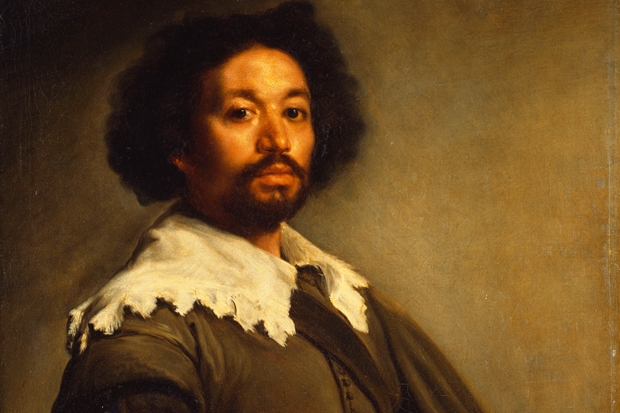Nothing could have prepared the art world for the astounding moment in 1970 when, at a Christie’s sale on 27 November, the world auction record for a painting smashed through the million-pound barrier for the very first time. It was Velázquez’s portrait of his assistant Juan de Pareja, and in the week leading up to its sale the international press became excited about the possibility that it would beat the previous record of £821,482, paid in 1961. I had recently become the art critic of the Evening Standard, and its enlightened editor, Charles Wintour, asked me to write a special article about this Velázquez portrait.
Propped up on a chair in a secluded top-floor room at Christie’s headquarters, this painting impressed me profoundly. I was able to sit down and gaze at it for a long time, writing notes for a piece published the day before the sale. It was the first time that a colour reproduction accompanied anything I had written for the Evening Standard.
Pareja posed for this portrait during a visit to Rome around 1650. Velázquez gives his assistant, a man of Moorish origin, as much dignity and pride as he lavished on his regal Spanish sitters. The climax of the Pareja painting lay in the face itself. The sitter’s eyes, I wrote, ‘stare outwards in a frank, unwavering gaze, full of an implicit faith in the man who is painting them. A second later, and the sensitive eyebrows hovering above could clamp down in a frown of suspicion or wary self-defence. But Velázquez understood exactly how to catch the moment of complete trust even while he presented the possibility of other, less desirable alternatives; and only an artist with his extraordinary powers of empathy could have managed to convey the full meaning of this fleeting response so well.’
I returned to Christie’s on 27 November to report on the auction. The atmosphere was extraordinary. Most observers could not believe that the painting would fetch £1 million. But the bidding, in an auction room that I had never seen so packed and tense, outflew all expectations. It started at £315,000, and took just 130 seconds. After reaching £1 million, the bidding did not slacken. If anything, it strengthened, and eventually shot past £2 million. It was finally knocked down for a staggering £2,310,000, almost tripling the previous world auction record for a painting. Even the most hardened dealers sitting in the audience breathed gasps of disbelief. Then there was a spontaneous burst of applause. The auctioneer left his rostrum, the painting was hastily removed, and sheer pandemonium broke out.
Scores of people swarmed around Alec Wildenstein, the 30-year-old dealer who had bought it. He had been sitting in the second row of the auction room and was escorted out by staff. But it took about ten minutes before a way could be found through the packed hall. He was visibly flushed, and at first seemed lost for words except to say that he was ‘very happy’. Then he managed to explain that the purchase realised the dream of his great-grandfather Nathan Wildenstein, who had founded the family firm 95 years before and thought this Pareja portrait was the greatest painting he had ever seen.
The international art market had taken on its present-day ability to astound everyone with mind-boggling prices. The surge did not continue without hiccups. Titian’s outstanding ‘The Death of Actaeon’, a late painting sold at Christie’s in June 1971 by Lord Harewood, was widely expected to outstrip the price paid for the Velázquez portrait. In the end, it fetched £1,680,000. I remember a distinct sense of disappointment in the saleroom. It did mean, however, that the National Gallery in London was able, after lengthy negotiations with its new owner Paul Getty, to acquire the Titian in 1972. Prices continued to fluctuate during this decade, and again at the end of the 1980s when a serious economic recession occurred. Yet in the long term, nothing could stop art from withstanding and even defying the world’s economic woes. Prices for paintings, by old masters as well as living practitioners, have continued to soar. But their success does mean, alarmingly, that our museums now confront ever more daunting financial challenges whenever they make brave attempts to acquire the finest artworks available today.






Comments